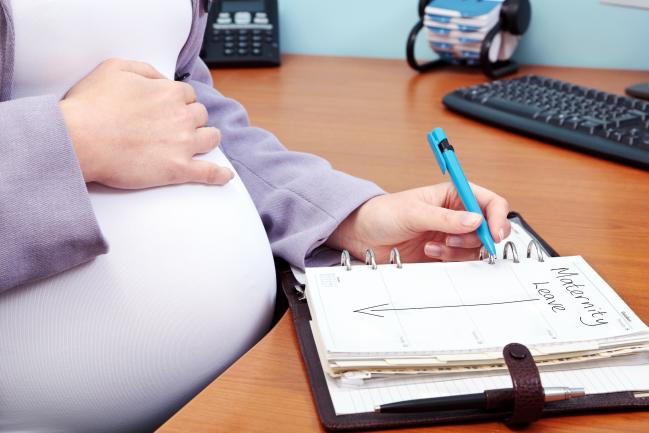Pregnancy Common and Challenging for Female Cardiologists, Survey Finds
Radiation fears, pressure to take less maternity leave, and breast-feeding issues emerged as chief concerns.

Most female cardiologists experience at least one pregnancy during their career, and they face a number of barriers both while pregnant and afterward that need to be addressed in order to improve the quality of their career and family life.
The conclusions come from an anonymous online survey of 501 female physician members in the American College of Cardiology (ACC) and represent the latest in a growing number of publications illuminating some of the different barriers and opportunities facing men and women in this field. Conducted by the Women in Cardiology (WIC) section, the current survey comes on the heels of another recently published WIC survey that found women were less likely than their male peers to marry or have children and that they endured greater levels of professional discrimination.
“The goal of this new survey was to look specifically at issues surrounding pregnancy,” lead author Amy A. Sarma, MD (Massachusetts General Hospital, Boston, MA), told TCTMD. “This type of data has never been gathered from cardiologists before, to our knowledge.” The survey was published online January 2, 2017, in the Journal of the American College of Cardiology.
Chief among the findings is that 76% of respondents reported a pregnancy, most during their cardiology fellowship or early career. Of note, 19% reported use of assisted reproductive technology, which the study authors say is a level nearly 10 times that of the general population (2% as of 2013). Female cardiologists also reported high rates of pregnancy complications, with 40% having at least one occur; complications included miscarriage, preterm delivery or labor, preeclampsia, eclampsia, or gestational diabetes.
The survey also found that 51% of female cardiologists reported pressure to take less maternity leave than they were entitled to take. This was particularly evident among women in training compared with those in practice (60% vs 50%; P = 0.04). While leaves of 4 to 8 weeks and 8 to 12 weeks were each reported by one-third of those surveyed, respectively, 15% said they took less than 1 month of maternity leave.
Sarma and colleagues hypothesize that women in training may experience pressure to return early “to offload the burden on cofellows.” They recommend that all workplaces “develop leave policies and clearly include them in employment contracts,” adding that “at least 2 months of paid parental leave for both mothers and fathers should be promoted.”
Breast-feeding also was curtailed, according to the survey, with 92% reporting initiating it but only 46% still actively breast-feeding beyond 6 months. Those who stopped breast-feeding reported barriers such as time constraints, lack of pumping space, lack of adequate breaks, and inability to maintain supply.
Overall, 90% of the female cardiologists surveyed said that their career choice influenced their family planning.
Radiation Concerns
To TCTMD, Sarma said the most surprising finding to her was the reported underutilization of radiation reduction strategies and monitoring methods.
“While a large number of women expressed concerns about radiation exposure during pregnancy, still only about 20% used fetal badges, 24% were using additional lead . . . and that is something that warrants further investigation as we think about ways to make workplaces safer for pregnant women,” she observed. These findings stand in sharp contrast to a recent study of radiation oncology residents, which found that 89% who became pregnant wore fetal radiation badges.
Strikingly, Sarma and colleagues also found that while younger cardiologists avoided pregnancy during periods of potential radiation exposure more often than did their older colleagues, 34% of respondents said they did not know if their department had an official policy regarding radiation exposure during pregnancy.
“Is it that current recommendations are not well-known? Is it that some workplaces don’t readily offer the requisite badges and additional lead? These are important questions that require further exploration,” Sarma added.
She and her colleagues suggest that women considering pregnancy may want to start wearing a dosimeter under their lead gear “to understand better the potential amount of fetal radiation their practice activities may result in, and then use this information to discuss optimal radiation-reduction strategies with a radiation safety officer.”
On the whole, Sarma said, the survey highlights that there “is a lot of room for improving the culture of cardiology for child-bearing women, and our hope is that by working toward these improvements we may be able to attract more women to the field, and men who may currently have concerns about starting a family concomitant with their careers in cardiology.”
L.A. McKeown is a Senior Medical Journalist for TCTMD, the Section Editor of CV Team Forum, and Senior Medical…
Read Full BioSources
Sarma AA, Nkonde-Price C, Gulati M, et al. Cardiovascular medicine and society: the pregnant cardiologist. J Am Coll Cardiol. 2017;69:92-101.
Disclosures
- Sarma reports no relevant conflicts of interest.


Comments